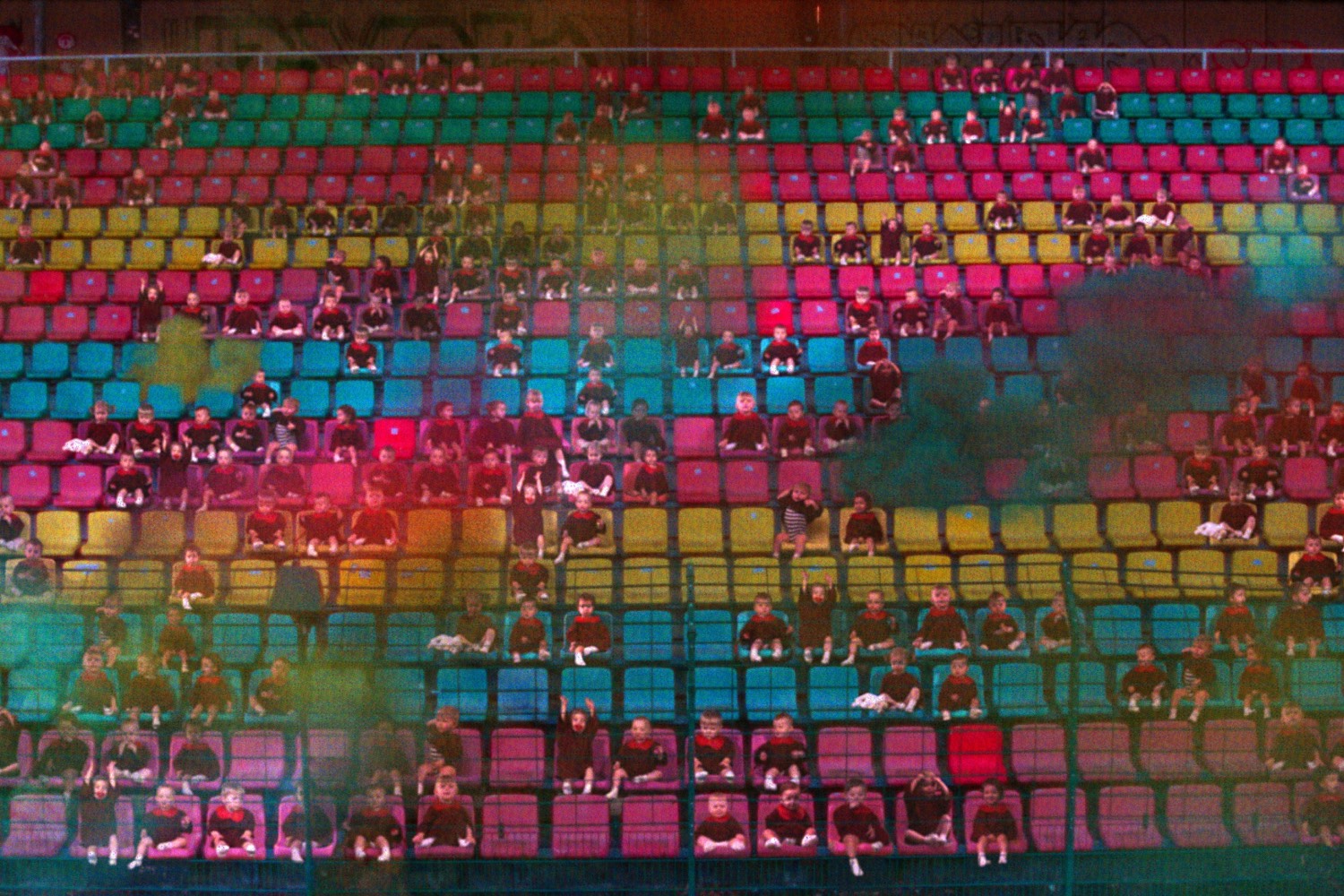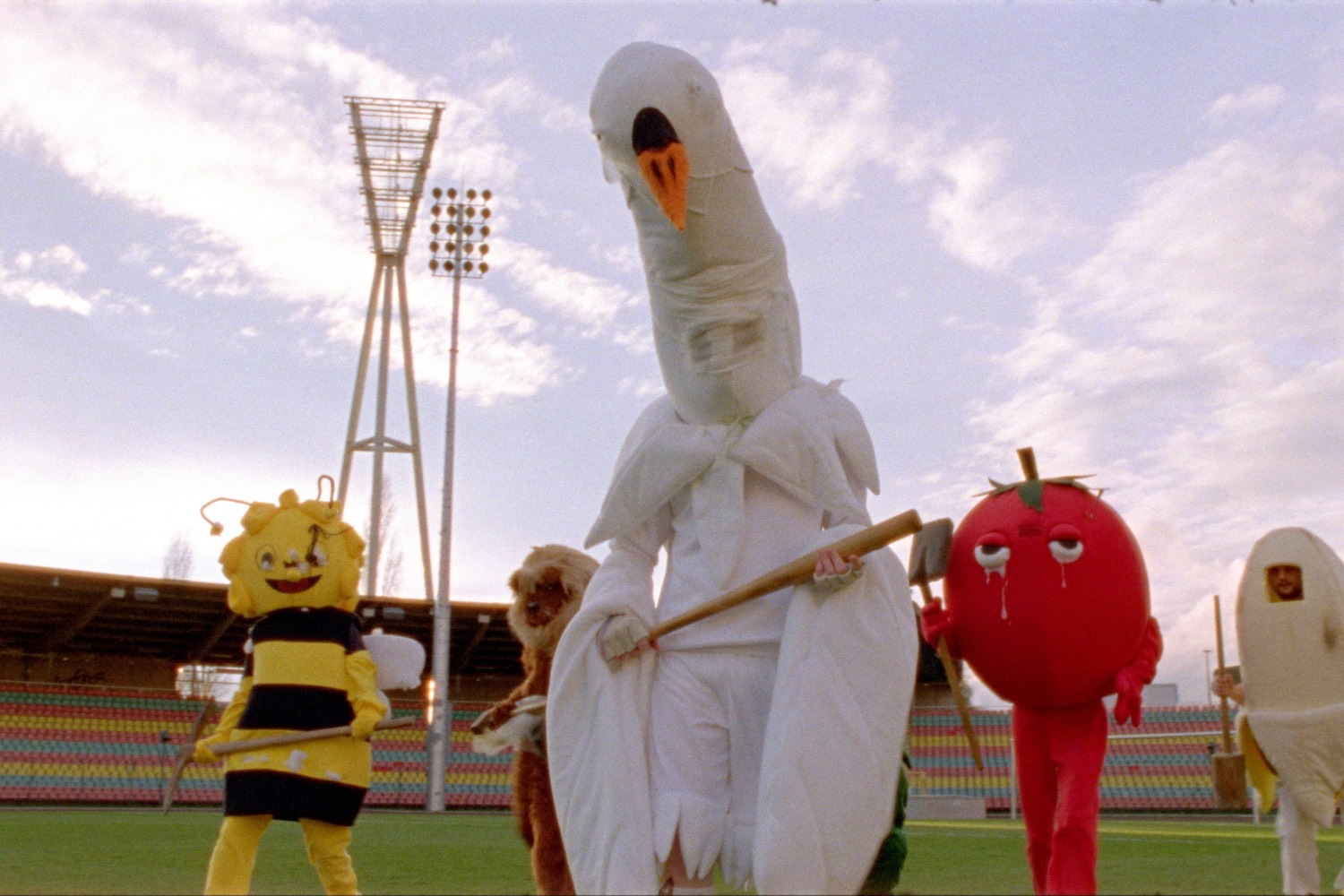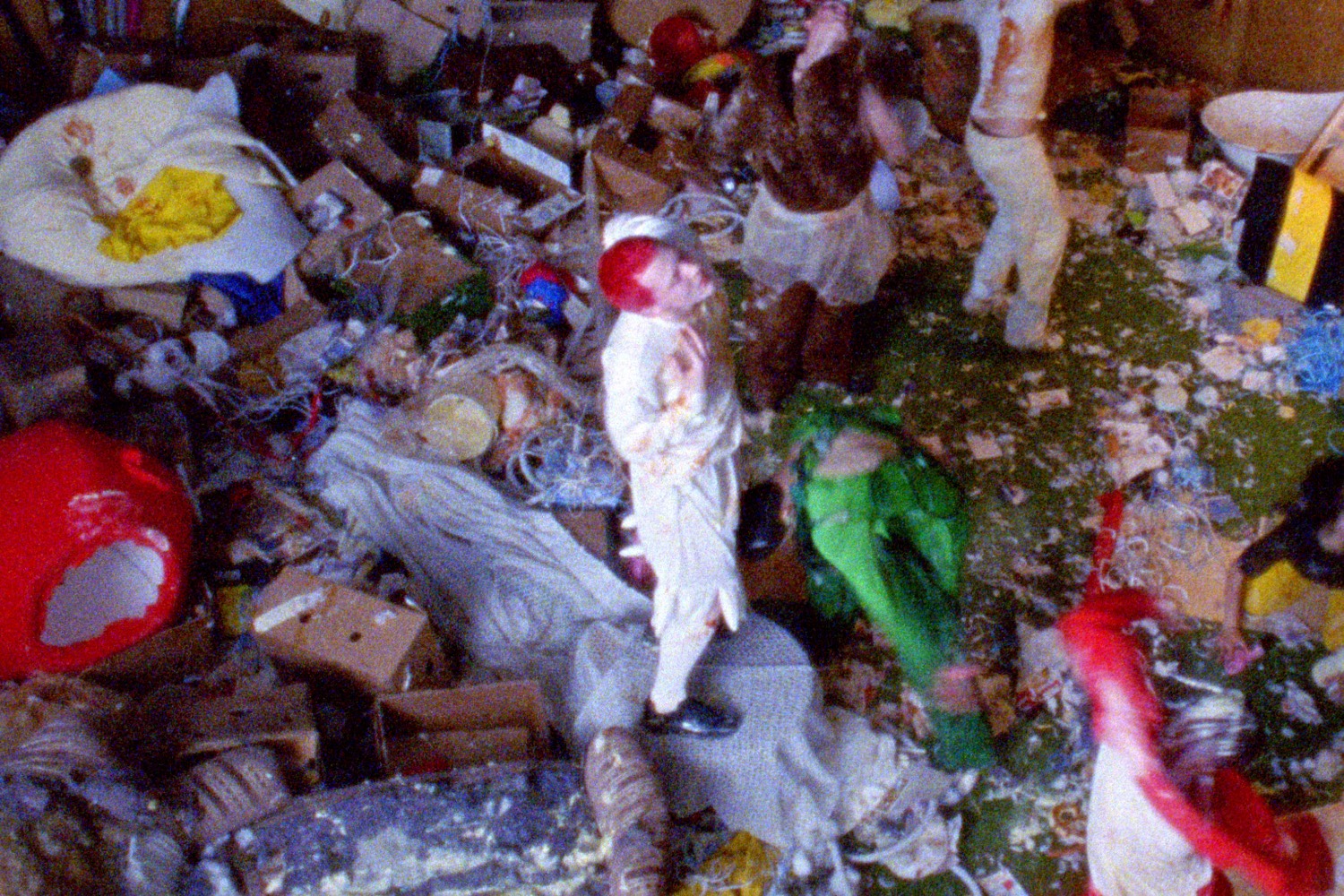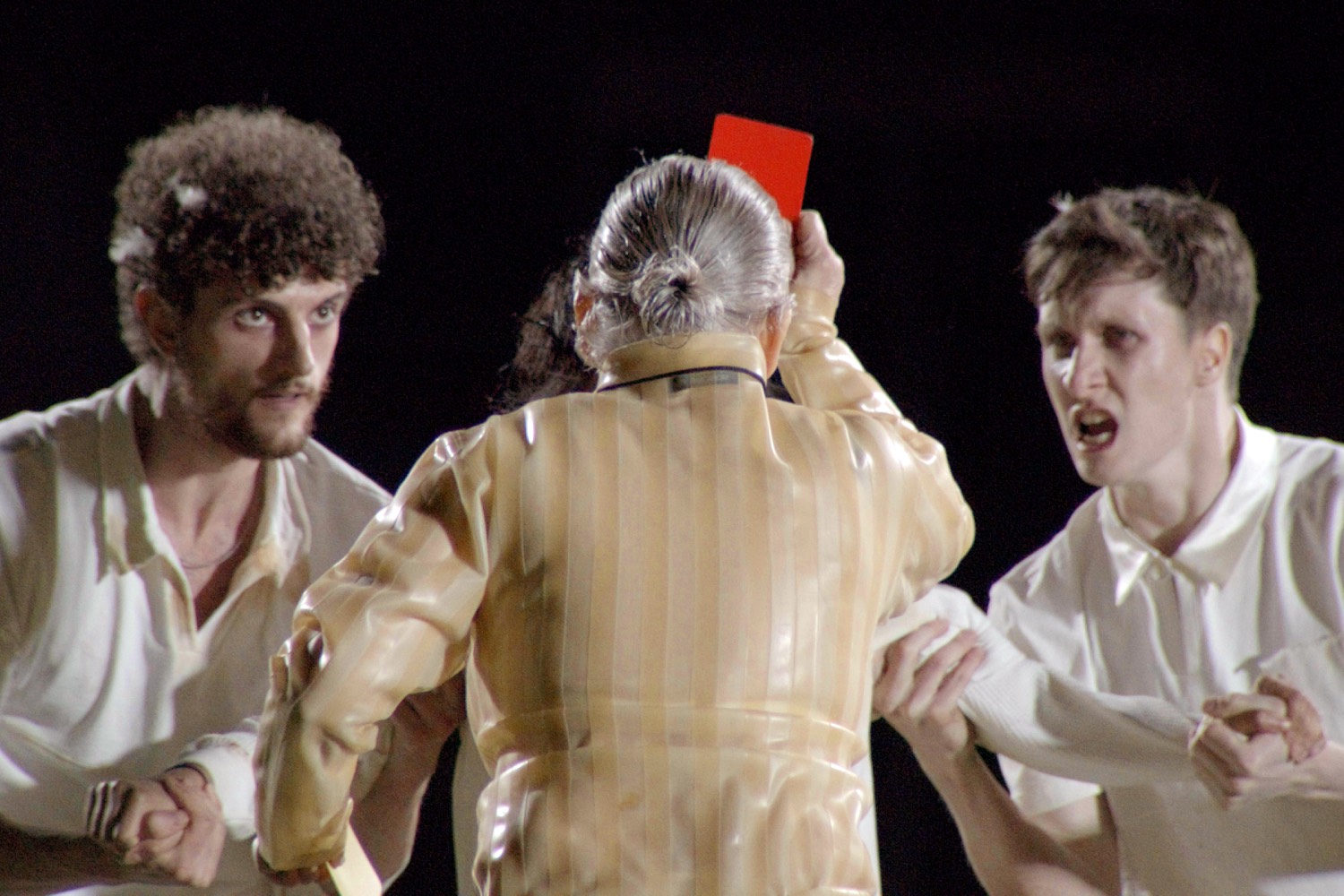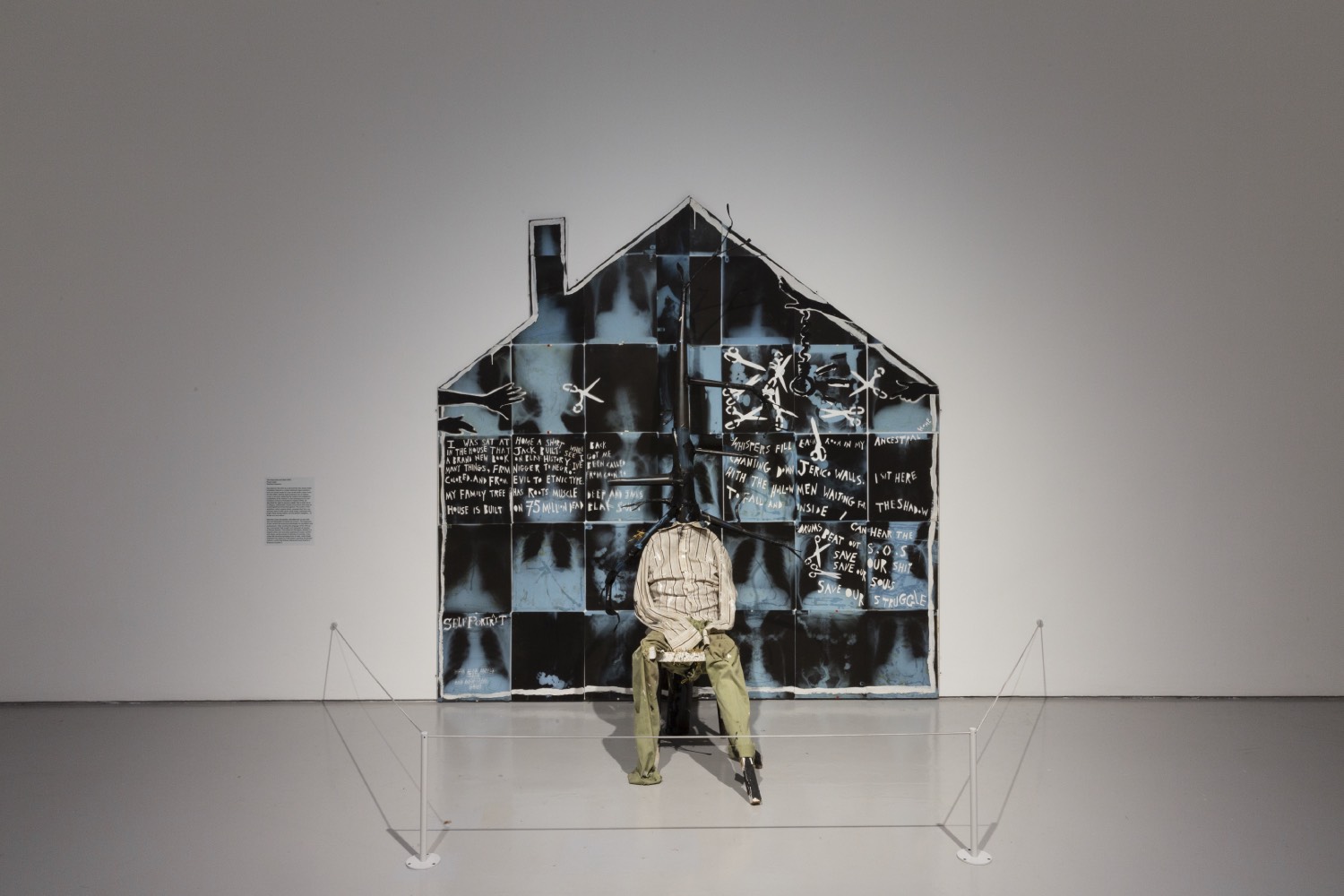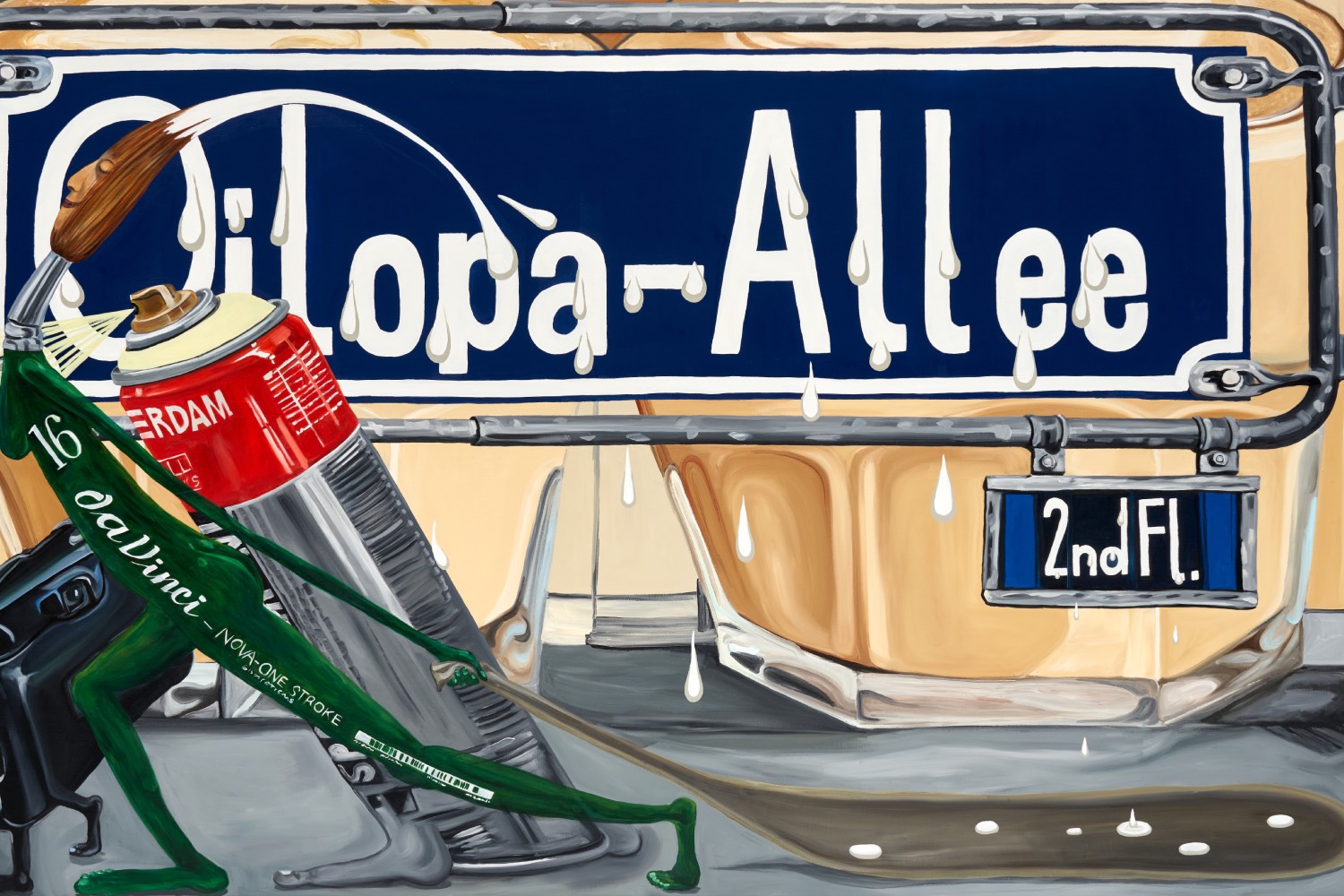Marianna Simnett’s three-channel video installation WINNER (2024) occupies a vast space in Berlin’s Hamburger Bahnhof. Viewers enter through a dark tunnel, and are greeted by a menacing yet elating drone, similar to the ocean-like sound of many voices in a stadium. Feathers are strewn across the space, and three large screens are arrayed with small podiums for visitors to sit on. Upon close inspection, the first podium contains pubic hairs encapsulated in translucent resin; the second one is encrusted with molded testicles; and the third one is upholstered with soft brown leather resembling the texture of old footballs. The carpet emits an oddly organic orange hue. This show is as much about football as it is about the draw and discomfort of bodiliness.
When I watched football as a preteen, I was fascinated by live broadcasts. Goals, tackles, fouls would repeat, as if sequences of movements could be extracted from the flow of time, relived, and fractured into different angles. In a way, Simnett’s video is about repetition too, drawing on the filmic language of sports broadcasting. The frame tightens around players with a low depth of field when the video repeats moments in slow motion, but, eerily, with different actors. Some scenes restage fouls that made football history, including open fractures, fake blood, and spit attacks.
The work was commissioned on the occasion of the 2024 European Football Championship, and aligns well with the themes of Simnett’s oeuvre. Take her video work The Udder (2014), an early piece about automated milk production, told like a tale of purity and corruption. Its viscerality is striking, affecting the viewer in a way that is rare in video art. In another piece, she had Botox injected into her larynx to lower her voice. Her videos are often narrated by children, as if this allows the Berlin-based artist to access the whimsical and playful side of violence.
Hardly a ball is kicked in WINNER, unless you count the soap passed around in a group shower, a stereotypical site of homosocial maleness. Football may be changing, but it often remains a refuge of aggressive cis-masculinity. In Simnett’s interpretation, some players are female, some nonbinary, and some male, highlighting the oddness of masculine mannerisms. The performers twitch and act like roosters, and they are fed by the ref. The catalogue cheekily refers to them as “The Cock Squad,” and they wear red wattles as necklaces, which aptly resemble testicles. Formally, the piece sometimes recalls Douglas Gordon and Philippe Parreno’s movie about Zinedine Zidane, a character study from 2006. However, Simnett’s interest lies elsewhere. Instead of focusing on celebrity and mediation, she weaves her own fictions; her work creates an air-tight system of rules, structured by female hot dog sellers, who sing a song (“You can win […], you can do anything in the next life”), and toddlers on the stadium terrace, who chant and are voiced by the post-punk poet and singer Lydia Lunch. The piece follows a narrative that is loosely based on Graham Greene’s short story “The Destructors” (1954), in which a group of youngsters tear down a centuries-old house in their London neighborhood that survived the World War II bombing.
Simnett’s players tear apart the referee’s house, built out of cards. Serious and gleeful, they cut up cushions and pillows, sawing and grinding at the very structure. Wordlessly, they reduce the interior to unrecognizable particles, drawing on Greene’s conceit that destruction, too, is a form of creation. It is serious business, and it is embedded in a game. Or is destruction the extension of the game? Historian Johan Huizinga identified the principle of competing players or teams as a defining feature of games, but here, this principle is not easily discernible. Instead, it is replaced by an inscrutable choreography of aggression, mostly directed at the referee, played by a gray-haired woman. This game is a fluid, volatile play of power.

